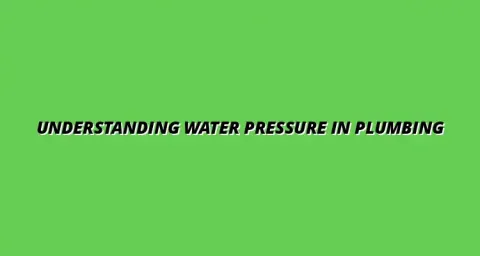
- Plumbing Basics
- Jan 12
2025-02-03
When it comes to maintaining a safe and dry home, sump pumps play a crucial role. They are often the unsung heroes of our residential plumbing systems. Understanding residential plumbing systems is key to home maintenance. By effectively managing excess water, sump pumps help prevent flooding, protect our belongings, and contribute to better indoor air quality.
Understanding the importance of sump pumps can save homeowners from costly repairs and damage in the long run. They are especially vital in areas prone to heavy rainfall or flooding. Let’s explore their functionality and how they fit into our homes.
Sump pumps are specialized devices designed to remove water from areas prone to flooding, such as basements. They work by collecting excess water that accumulates in a sump pit, which is typically located at the lowest point in a home. This collected water is then pumped away from the home, preventing flooding and water damage.
In a nutshell, sump pumps are essential for water management in residential settings. They help control groundwater levels and redirect water to safe drainage areas. Now, let's delve a bit deeper into what makes these pumps tick!
A sump pump is a crucial component of any home’s plumbing system, especially in regions with high water tables. It serves primarily to protect against basement flooding, which can lead to significant damage if not addressed. By understanding what sump pumps do, homeowners can appreciate their value in maintaining a safe living environment.
They can be battery-operated, electric, or even hydraulic, depending on the specific needs of the home. Homeowners should assess their unique situation to determine the best type for their property. Remember, the right sump pump can make all the difference!
At the heart of every sump pump's functionality is the process of detecting and removing water. Here's how it typically works:
This simple yet effective mechanism helps prevent damage and keeps basements dry. Regular maintenance is essential to ensure that sump pumps function correctly, especially during heavy rains!
Sump pumps are versatile devices with multiple applications within a household. Their primary purpose is to protect the home from flooding, but they also serve other useful functions. For example, preventing leaks in other areas of your home can also help reduce the load on your sump pump. Learn how to check for hidden bathroom leaks to avoid potential problems. Let's take a closer look at the most common applications of sump pumps!
By addressing these issues, sump pumps contribute to a healthier and safer living environment. Homeowners who recognize these benefits are often more inclined to invest in a reliable sump pump system.
One of the most significant advantages of having a sump pump is the prevention of basement flooding. In regions that experience heavy rainfall or rapid snowmelt, water accumulation in the basement can lead to serious issues, such as mold and structural damage. Sump pumps effectively manage these risks.
By keeping water levels in check, sump pumps help ensure that basements remain dry and safe. Homeowners can rest easy knowing that they have a reliable system in place to handle potential flooding challenges!
Another notable benefit of sump pumps is their role in improving indoor air quality. High humidity levels can lead to a range of problems, including mold growth and respiratory issues. Sump pumps help mitigate these risks by effectively removing moisture from the basement. Remember to practice good home plumbing safety to prevent further issues.
By keeping humidity levels low, they create a healthier living environment for everyone in the home. Properly functioning sump pumps contribute not only to a dry basement but also to a more comfortable indoor atmosphere!
Now that we’ve covered the importance of sump pumps, let’s turn our attention to the different types and components that make them effective. Understanding these elements will further empower homeowners in their decisions regarding sump pump installation and maintenance.
With the right knowledge, you can choose a sump pump that best fits your home’s needs and ensure it operates at peak performance. Let’s break down the various types of sump pumps available!
Maintaining your sump pump is essential for keeping it running smoothly and preventing unexpected failures. Regular maintenance practices can enhance your pump's performance and longevity, ensuring that it effectively protects your home from flooding. Here are some important maintenance practices to keep in mind. Understanding plumbing codes can also help you ensure your system is up to standard.
One crucial aspect of sump pump maintenance is to regularly inspect and clean the sump pit and pump. Debris, sediment, and dirt can accumulate over time, leading to reduced efficiency. By keeping these areas clean, you help your sump pump function better and avoid costly repairs. Similarly, regular maintenance of your water heater is crucial for efficiency and longevity.
Testing the pump functionality and float switch is another vital maintenance step. This can be done easily by manually lifting the float to see if the pump activates. Regular testing can catch problems early, allowing for quick resolutions and preventing water damage.
When inspecting the sump pit, look for any blockages that may restrict water flow. Keeping the pit clear helps maintain optimal water levels. If you notice any buildup, make sure to clean it out promptly. If you have problems with your kitchen sink, remember to check for leaks promptly.
Regular cleaning of the sump pump itself is also recommended. Dust and dirt can interfere with its operation, so a quick cleaning can go a long way in ensuring your pump stays in good working order.
Even with proper maintenance, issues can still arise with sump pumps. Being aware of common problems and their solutions can save you time and money. Here are some frequent issues that homeowners encounter:
When dealing with clogged discharge lines, it's important to clear any blockages as soon as possible. This ensures that water can exit the sump pit efficiently, preventing overflow. If you experience power failures, consider installing a battery backup system to keep the pump running during outages. For further assistance, contact a plumber in Billesley, Birmingham.
Clogged discharge lines can often be resolved by using a plumbing snake or similar tool to dislodge blockages. Regularly checking these lines can prevent clogs from forming in the first place. On the other hand, power failures can be addressed by having a reliable backup power source, such as a generator or a battery backup pump.
Understanding the warning signs of sump pump failures is essential. This includes unusual noises, increased cycling, or the pump not turning on at all. Catching these signs early can help you avoid more severe problems down the line.
Being vigilant for warning signs can save you time and hassle. If your pump is making strange noises or if you notice water pooling in unexpected places, it's time to investigate. Additionally, if the pump runs more frequently than usual, it could indicate an issue that needs immediate attention.
In conclusion, regular maintenance and quick troubleshooting of sump pump issues will ensure your home remains dry and protected from water damage. Taking these steps can provide peace of mind, knowing that your sump pump is ready to handle whatever Mother Nature throws its way!
